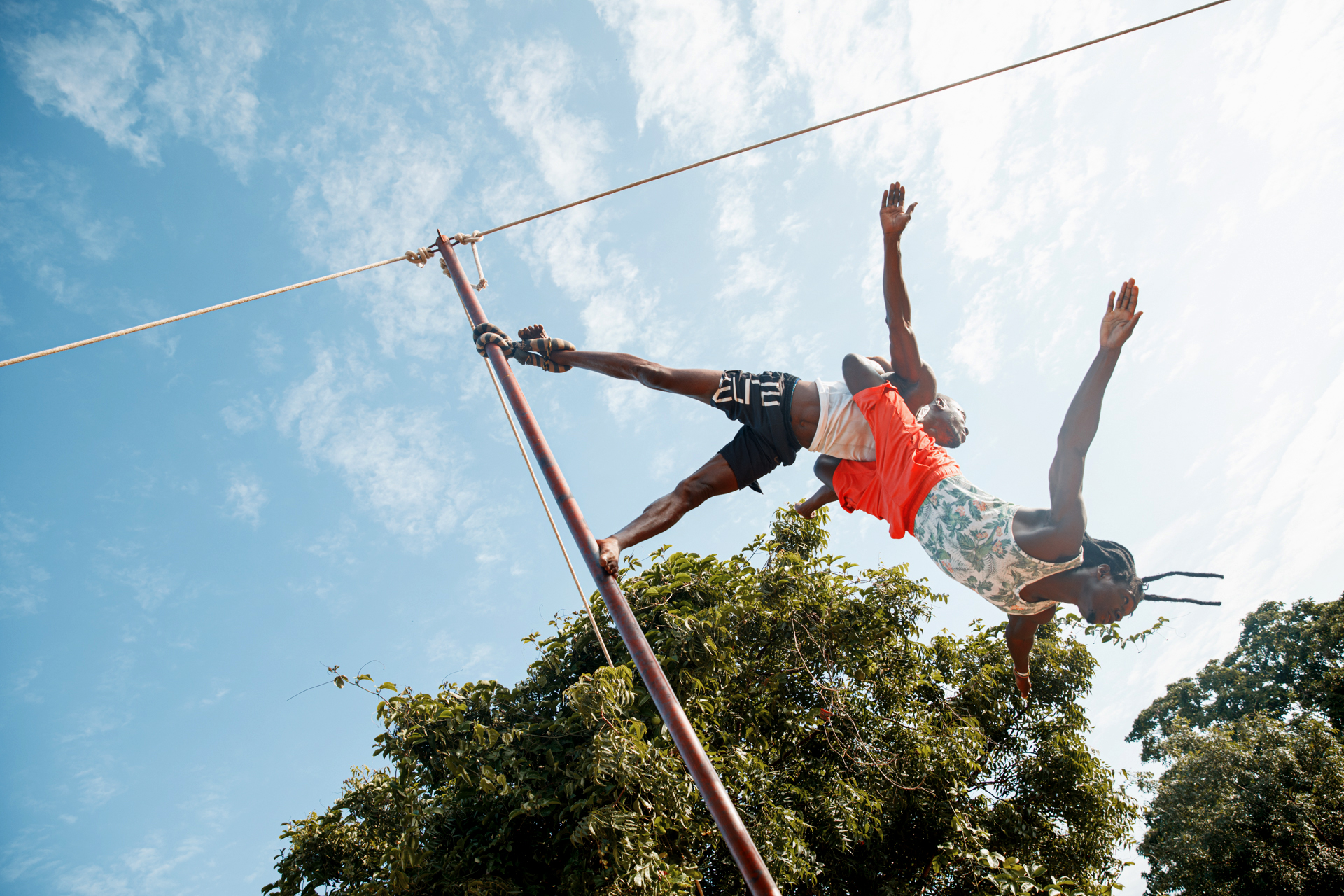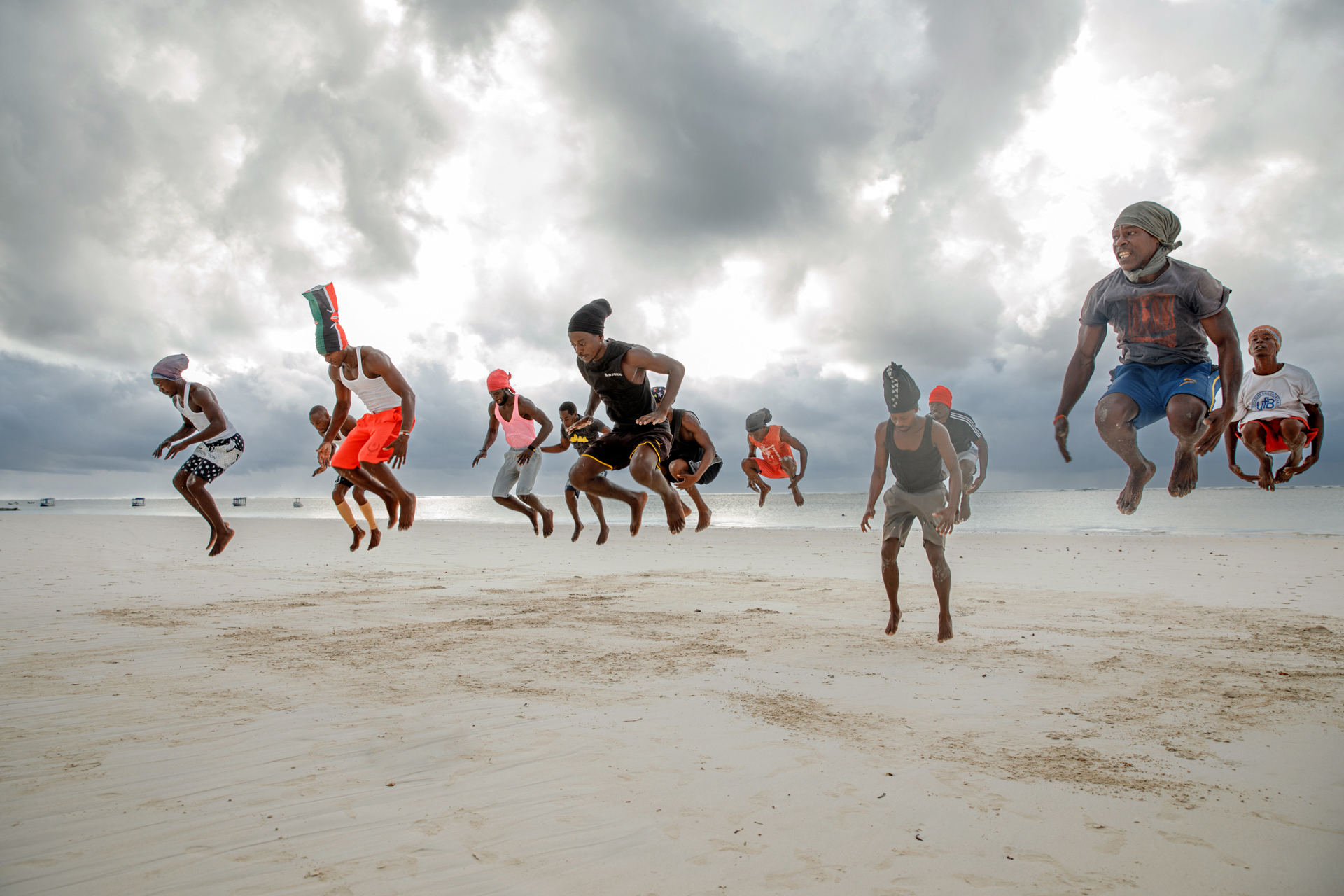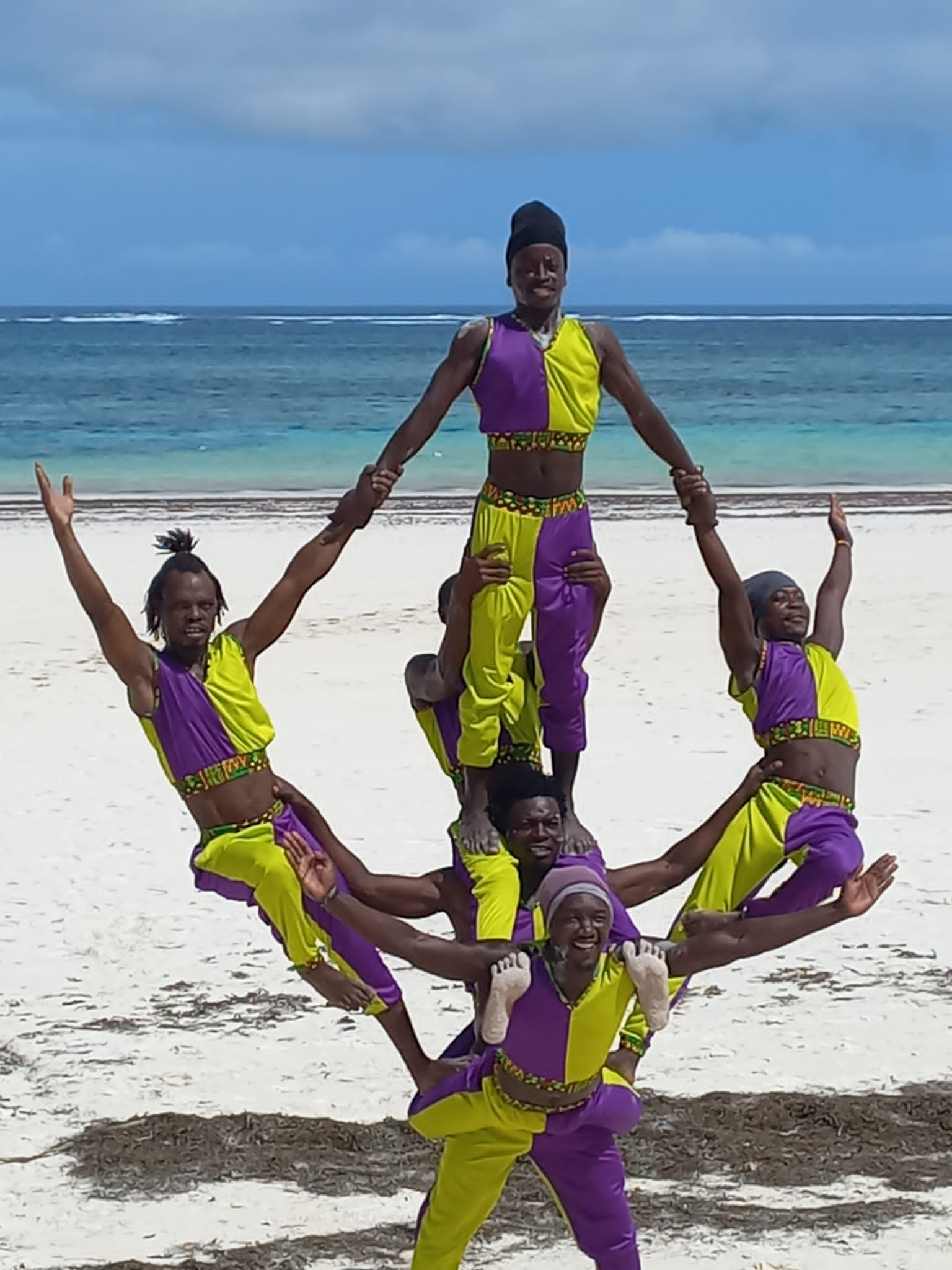Don’t Close the Curtains on Kenya’s Acrobats
They Fly Through the Air and Build Human Pyramids to Tourists’ Delight. But the Performers Struggle for Recognition and Financial Stability
It’s showtime at one of Kenya’s five-star resort hotels.
Tourists from around the world move in small groups to the performance area next to the pool to see the evening’s headliner: Burning Spear Acrobats.*
The five members showcase the art and skill of Kenyan acrobatics. They adjust themselves into elaborate human pyramids. They fly through the air in perfect synchronicity as the ropes turn in opposite directions during the double rope skipping act. And they create an impressive tower of stacking chairs and hand balance from one to another to great heights.
Their performance is both a glimpse into the centuries-old performance traditions from Kenya and other African countries, with accounts dating back to at least the 14th century, and the evolution of its modern form, which developed in Kenya alongside its tourism industry in the 1960s.
But the future of this art form is in jeopardy. While resorts across Kenya’s coast sell tourists on these shows, they do not pay their performers a living wage. Because of that, Kenyan acrobats don’t know how much longer their show can go on.
The majority of acrobats working on Kenya’s coast today come from impoverished backgrounds and have only basic schooling. Though the path to becoming an acrobat is less financially stable than working in construction, as gardeners, or as drivers of motorcycles or tuk-tuks, those who seek it out do so because it enables them to be creative and steel their bodies, while taking pride in their cultural identity and heritage.
To break into the industry, young Kenyans will approach relatives and friends who already perform to mentor them. The troupes’ training is self-driven. They meet on the soft sand beaches before the heat of the day to practice and then again in the afternoons to fine-tune choreography. They have no facilities, no safety equipment, and no health insurance. The Burning Spear Acrobats were fortunate in that they started in a north coast village that had a training location with a pole and a rudimentary stage. But though formal training centers do not exist on the Kenyan coast, acrobats form brotherhoods of performers who support each other in their quest to live their lives with dignity.
Troupes tend to have a fixed day of the week performing in the various hotels, for weekly, bi-weekly, or monthly engagements. Successful troupes will work five to six days a week. Others are not so fortunate and have to make do with one to three performances. The frequency of performing is also dependent on the tourism seasons; the low season provides only scant opportunities and is a tough time for performing artists.
The unpredictability makes international contracts more prized. Over the years, many Kenyan acrobats have performed in tourism venues from Mexico to Israel, on cruise ships, and at international festivals. Despite being a fixture on the cruise circuit around the world, Kenyan—and African acrobatics more broadly—have yet to receive the mainstream recognition they deserve. Still even the base-level international contracts they take provides them with some financial stability. Most acrobats who have worked internationally for a year or more are able to save and acquire a small plot or build a small dwelling on ancestral land.
But in Kenya, the profession is struggling to survive. Part of this is because of the state of the tourism industry. Over the past two decades, the country has been hit hard by terrorist attacks, notably the 1998 U.S. embassy bombing, the 2013 attack on the Nairobi Westgate shopping mall, and a series of al-Shabaab strikes. More recently, the COVID-19 crisis handed a significant setback to the sector. As hotels have tried to maximize their profits amid this uncertainty, they’ve done so by not adjusting their performance budgets to the rising costs of living.
Over the past 20 years, salaries for performers have remained largely stagnant. As reported by senior artists, salaries in 2003 ranged from 1,500 to 3,000 KES (Kenyan Shillings) per show for a group of five (the equivalent of roughly $20 to $39, though that represented a higher purchasing power back then). Salaries have increased only marginally since; today they range between 1,500 and 5,000 KES for most shows (roughly $10 to $32 per group per show), which amounts to a de facto decrease.
Meanwhile, the cost of living has skyrocketed in Kenya. Food inflation has been especially dramatic, averaging 9.74% per year from 2010 until 2023. This has left performers living hand-to-mouth, with hunger knocking on the door, especially during the off-season. The fact that the situation is especially bad in hotels catering to audiences of predominantly white tourists from the global north is reminiscent of colonialist practices of showcasing “exotic” people and animals. While complaints about low wages have increased across the working-class population in Kenya, acrobats and other performing artists are particularly vulnerable.
Ethnic discrimination also plays a role in these worsening conditions. Performers are overwhelmingly members of the Mijikenda, an ethnic group consisting of nine distinctive peoples who live along the coast. Since independence, the ruling parties of Kenya have invested heavily in their own ethnic constituencies, while coastal Kenyans—without sufficient political power in the capital city of Nairobi—have had to put up with pot-holed roads, poor healthcare, underfunded education, and a general lack of investment. The overall situation has also led to the performers and other members of the Mijikenda to be treated poorly by some of the hotel management staff and entertainment managers, who are responsible for determining performers’ salaries. Several of these managers have even taken small cuts from the salaries of acrobats. Most hotels do not allow tipping after the show, and where it is allowed, the result varies and are not enough to supplement incomes.
Combined, these factors have led to a precarious financial situation that if it continues, will push the culture of acrobatics in the country to disintegrate. That would be a loss for Kenya and the world.
One step to rectifying the situation is for Kenya to recognize the circus arts as an integral part of its national heritage. Neighboring Tanzania, for example, is already investing in training institutes for its acrobats, who also tour internationally. South Africa houses the renowned Zip Zap Circus, the Zip Zap Circus School, a permanent venue for circus arts in Johannesburg, and an Acrobatics Federation of South Africa that specializes in acrobatic dance, among others.
Currently in Kenya, the nonprofit Sarakasi Trust Foundation is the only major development organization investing in the circus arts. Located in Nairobi, its Sarakasi Dome—which has dance studios, an auditorium, and various multi-purpose spaces—offers training that empowers artists creatively and economically, including education on social entrepreneurship and life skills. More such support is needed for acrobats on the coast. For now, the performers are left to continue to push to find solutions to their dire situation, despite the many obstacles in their way. For example, a well-established advocacy association they created was shut down in 2015 as part of a larger government crackdown on community-based and other non-governmental organizations that were suspected to have ties to terrorist organizations. Performers continue to attempt to organize and negotiate with hotels, but such campaigns come with a risk because artists fear retaliation and that they will lose their jobs if they become associated with such movements.
The result is that Burning Spear Acrobats, along with other troupes on the coast, continue to perform at star-studded venues while juggling other jobs to get by. They continue in the hopes that Kenyan acrobatics, and African acrobatics more broadly, are given their rightful place in the pantheon of awe-inspiring circus arts of the world, and receive fair compensation for such work. As one of the members of Burning Spear Acrobats said recently, “People need to understand that acrobatics is a serious career, that it requires commitment and discipline. We deserve respect for our work.”











Send A Letter To the Editors